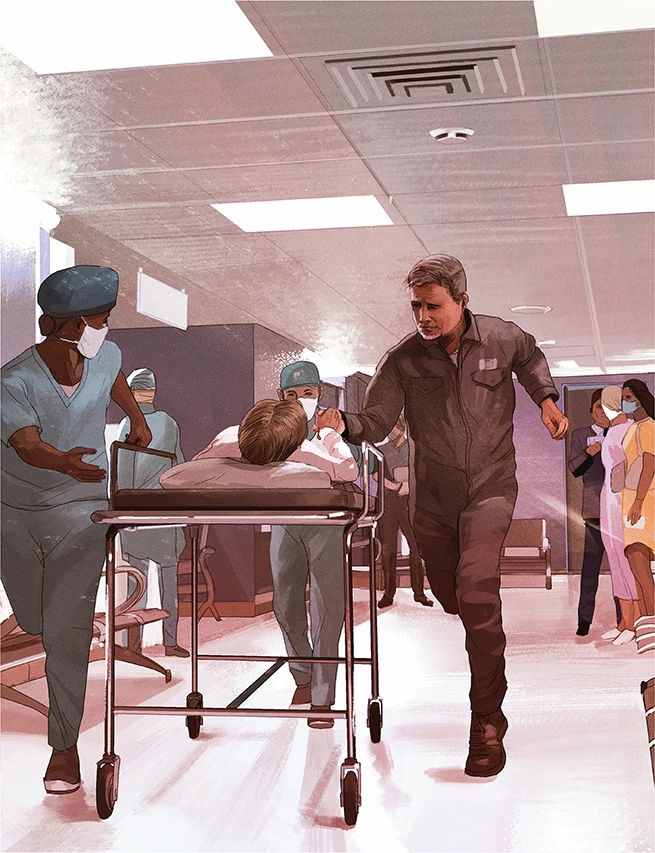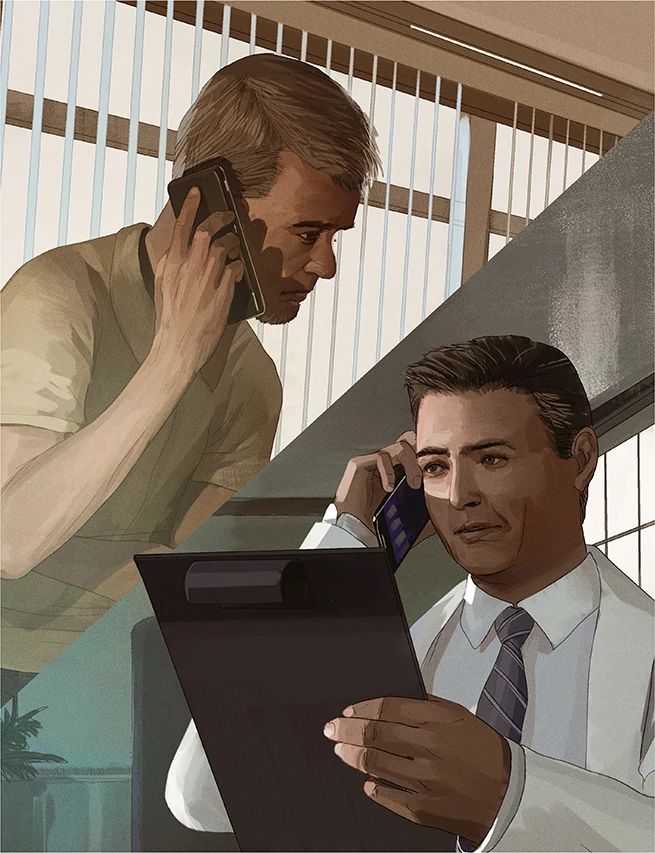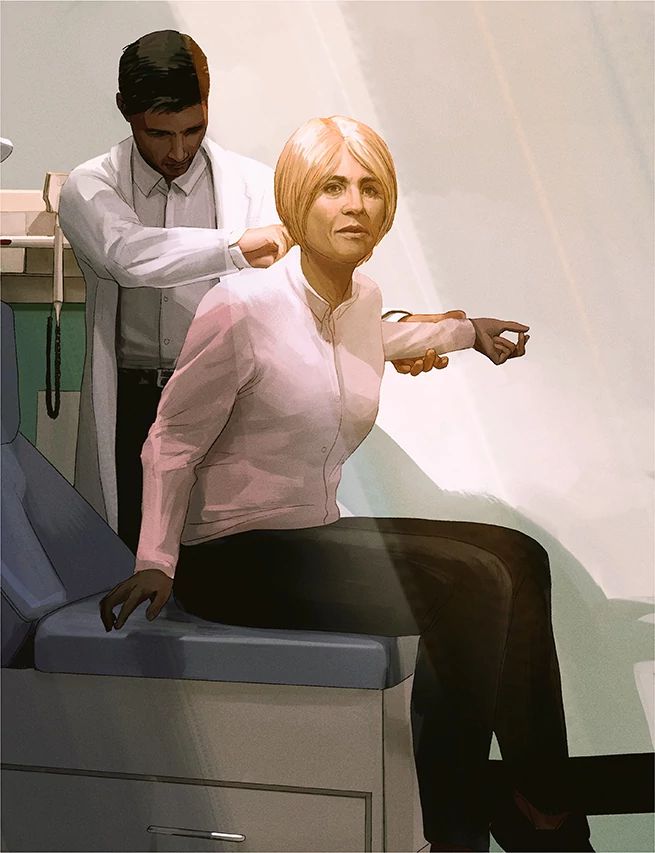AARP Hearing Center
On January 5, 2022, Sandra Carlson planned to end her life.
At 53, she needed a walker to take a few steps. Even with it, she crashed to the ground. Her left leg was cold, paralyzed, with searing pain ripping through it. She took the opioid painkiller Dilaudid — at least four times stronger than morphine — every day. The drug barely took the edge off the pain and left her nauseated and fuzzy-headed. She had lost control of her bowels.
This had been Carlson’s life for two years. Yet visits to a series of specialists near her Savannah, Georgia, home and at hospitals, major medical centers and emergency rooms in two other states hadn’t yielded a diagnosis or treatment. “I couldn’t take any more,” she says. “I was absolutely exhausted and tired of hurting. My life was done.”
Then her mysterious condition got even worse.
Petite and blond, with a lilting Southern accent, Carlson had run track and played softball in high school. As a young adult, she regularly jogged two to three miles a day and exercised at a gym. But she was also no stranger to pain. A workplace injury in the late 1990s ended her career in a government job she loved and led to spinal fusion surgeries. Afterward, Carlson stayed busy. She overhauled her diet and did daily workouts in a swimming pool. She lost 70 pounds and kept the weight off. She loved to cook, visit family and friends, play with her beloved dogs and attend church.
Then, in early 2020, she felt a shooting pain in her left leg. This was new. After consulting an orthopedic surgeon, she underwent another spinal fusion procedure in June 2020. But afterward, her pain continued.
Frequent falling
In December 2020, Carlson began falling — hard — with no warning. Shocked, but assuming it was a spine-related symptom, she consulted another surgeon and had yet another painful spine procedure in June 2021. She hoped the problem was solved.
Within about two weeks, the falls were back—and now she’d lost control of her bladder and bowels.
I dropped, Carlson told us. I had no control. I just went straight down. My left leg would give out completely like nothing was there. Sometimes I’d go straight backwards and hit my head on the floor.
July 3, 2021, was really a kicker.
I was in my front yard giving a plant some water. It was hot outside. All of a sudden, I went down. I managed to get back up, but I noticed I had used the bathroom on myself, and I’m like oh, what’s this? That scared me. I got myself into the house and I cleaned myself up. I started making calls. My neurosurgeon’s office suggested I go to the emergency room.
Her fear now ratcheted up again, Carlson spent four days in a local hospital, hoping for answers. She was discharged without a diagnosis. After taking her home, her husband, Travis Carlson, went to a drugstore to buy incontinence supplies for her.
I was so embarrassed. I was in so much pain, and my husband was very concerned. He didn’t know if there was an infection or what the deal was.
In early August 2021, Travis drove Sandra 140 miles to the emergency room of a major medical center in northern Florida. They didn’t have an appointment. The nation was in the grip of the COVID pandemic. A headline-grabbing surge in cases had filled hospitals beyond capacity across the South. Some were turning patients away from emergency rooms. It wasn’t long before they turned Carlson away.
Travis couldn’t go in [to the hospital] with me because it was still COVID. [The doctor] didn’t have much to say to me other than to go back where I came from. I said, “You’re not going to do any tests? I really think this needs to be looked into.” I think because I said that she ran one MRI. Then we went right home.
More medical appointments
In September, the couple drove about a hundred miles to a major medical center in South Carolina for an appointment with a spine specialist. Carlson could still move her left leg, but her foot was ice cold. She was forced to use a cane to get around. Due to the pain, she was barely getting any sleep. After she outlined her symptoms, the physician suggested medication to help her get some rest.
They had a lot of compassion for me, a lot of empathy. The doctor said, “You really need to find a specialist to really dig into this because you’ve got some issues somewhere. I can’t treat you.” I had respect for him because of that. They sent me home with a grabber, some pull-up shorts to go over my Depends and a device to help me get my socks on. They went way out of their way to help me.
In October, the couple traveled 122 miles to the office of an incontinence specialist at a university medical center in Georgia that was recommended by a digestive-system specialist close to home. There, Sandra got a clue — but still no diagnosis.
This doctor said, “You really need to have some sort of surgery to fix the root cause of the problem before I can help fix the incontinence. Once you do, come back and I’ll be more than happy to help you.” He did extensive testing, and he could see where I had feeling on the right side, but I would be lax on the left side.
The pain continued. It was sharp and constant, and she tried a variety of medications, but only Dilaudid (hydromorphone), prescribed by a pain-management specialist, blunted the agony. The drug made her throw up, so four times a day she took melt-in-the-mouth tablets of the antinausea drug Zofran (ondansetron), often prescribed for nausea from cancer treatments. Dilaudid made her mentally fuzzy, so it was hard to do the word puzzles that she enjoyed to pass the time. She rarely left the house.
Oh, it was the worst imaginable pain. Like an electrical shock. It was so bad that I lost my hair. I broke out in hives. I just couldn’t function. Bad words came out of my mouth. I don’t take heavy-duty medication. But I had to be on Dilaudid to survive. The pain broke through the Dilaudid, and that’s some strong medicine. I would throw it up, but I’d still wait several hours to take the next dose. I didn’t want to take too much.
When pain struck, Carlson would grab a black marking pen and trace its route across her leg. It was always the same. As a last resort, she had begun trying to diagnose herself.
I could draw the path. It followed my quadriceps muscle along my thigh, down the inside of my knee and calf and would shoot down to my foot. I would go to appointments with the lines marked on my leg. I wanted them to see it.










































































You Might Also Like
Green Light Therapy Shows Early Signs of Relieving Migraine and Fibromyalgia Pain
People experiencing pain who tested out green lights or green glasses didn’t want to return the equipment after the test was over. They felt that good.
How to Manage Chronic Pain
New treatments, including nondrug and nonsurgical options, may help you live more comfortably
Medical Advancements in Chronic Pain Treatment
Breakthroughs that can bring you relief.